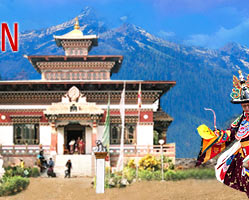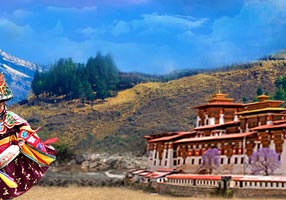Bhutan is predominantly an agricultural country with 90% of its workforce employed in subsistence farming and animal husbandry. Bhutan’s economy is one of the world's smallest and least developed economies and is based on agriculture and forestry that accounts for about 40% of GDP. Most of the Bhutanese people earn their livelihood from small-scale farming that produces barley, corn, citrus fruits, potatoes, rice, root crops and wheat; cattle rearing and raising pigs, sheeps, yaks and tanguns (sturdy breed of pony used for mountain transportation).
Other major sources of employment in Bhutan are alcoholic beverages, handicrafts, cement, metal, wood, leather working, calcium carbide and textiles. The primary exports of the country are cement, handicrafts, cardamom, fruits, gypsum and timber and major imports are fuels, grain, machinery and vehicles. The other key resources for Bhutan are production of hydroelectric power (it exports some electricity to India) and its vast potential for tourism. However, tourism is a restricted activity in Bhutan and is also the country's largest source of foreign exchange
Bhutan's economy is closely tied to that of India, and the two countries trade with each other and have strong monetary links. India also funds many of the government development projects in Bhutan including the expensive and difficult project of building the network of roads in this mountainous country. Most of the industries in Bhutan are cottage industries and are technologically backward. Bhutanese Government has made some progress in improving social welfare such as starting model education, social, and environment programs with support from several multilateral development organizations, while continuing to protect country's environment and cultural traditions jealously.




